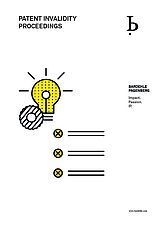In patent invalidity proceedings a party is typically represented by one or more patent attorneys. If parallel infringement proceedings are pending, the additional participation of the attorneys-at-law representing the party in the parallel infringement proceedings is highly recommendable to assure coordination and in particular consistency of infringement and invalidity arguments.
At first instance, the court principally investigates and evaluates the facts on its own motion (ex officio). Thus, the court could even search and introduce new prior art to the proceedings. In practice, however, the facts and arguments presented by the parties are of the greatest importance for the outcome of the case.
In our firm, the factual and legal arguments are developed by our patent attorneys in close cooperation with our attorneys-at-law and with the support of a number of patent engineers and the latest search tools for finding relevant prior art.
The patentee may amend the claims of the patent in the course of the invalidity proceedings within the scope of the original disclosure and within the scope of protection of the patent as granted. Claim amendments may be introduced unconditionally, or under the condition that the granted claims or differently amended claims are not accepted. This means that the patentee may defend their patent with a main request and an array of auxiliary requests as fallback positions, which opens a wide field of considerations and requires a carefully drafted strategy.
In view of the expertise of the three technically trained judges on the panel, the (first instance) Federal Patent Court virtually never commissions a court expert. However, the parties may support their submissions and arguments with a written opinion of a private expert. Although the panels need not and tend not to hear private experts during the proceedings, it is nevertheless advisable in important cases to submit party expert opinions as soon as possible.
According to the procedural rules for the second instance proceedings, the Federal Supreme Court of Justice has to base its decision on the facts determined at the first instance. There are narrow exceptions, for example if there are specific indications which cast doubt on the facts of relevance for the decision as they were determined by the Federal Patent Court. New facts can only be submitted to a very limited extent, for instance, if they concern an issue which has apparently been overlooked or regarded as immaterial by the Federal Patent Court, or if the non-assertion does not involve negligence by the respective party.
In contrast to the evaluation of facts, the evaluation of legal issues is reviewed de novo in the second instance. Many important problems have been considered as legal questions by the Federal Supreme Court in the past, for instance the determination of the qualification of the relevant skilled person, questions of claim construction, and the assessment of novelty and inventive step. These are the problems on which the appeal stage concentrates.
The Federal Supreme Court also appoints court experts in almost no cases now.

